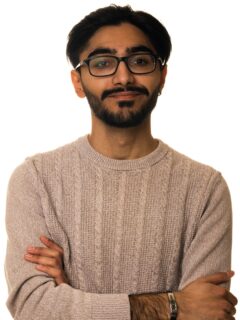Director
What does a Studio Broadcasting Director do?
They make up more of the creative side of productions. Staying with a production, up to every phase of it and working closely with department heads as they have huge influence and oversight.
Studio Directors vary drastically from one production to another as do their limits on what can and cannot be on a production. They mostly help to determine program schedules and ensure conformity with broadcast laws and government regulations.
Directors help manage the Cast and Crew and the hiring of Cast and Crew as well of that they hold quiet a lot of responsibility as they have to oversee whole productions to the practical to the behind the scenes; Reviewing scripts and storyboards identifying potential problems on set. a side form all the fun stuff that they have to manage they also hole the grave responsibility of managing the financial aspects of a project.
This role would be the most important, however a production couldn’t be completed without any of the others.
Terms and Words
Wide – This refers to using a wide angle lens so you can get a wider shot
Close up/Push in – These are both very similar to each other but there are two key differences between them. A close up refers to the use shot that is close up to the subject or person. Where as a Push in is where the camera slowly moves and get pushed in on the subject or person.
Vo/Voice over – Narration played over B-roll
A-Roll – Interview or on camera talent – Video and audio filmed together
B-roll – Extra footage used to give context to a subject with the use of narration but this isn’t always necessary
Motion Graphics
What does a Motion Graphics Artists do?
A graphics designer creates useful, meaningful and functional visuals. What they make depends largely on what the client or company needs. But this will mostly include developing visual assets to make the program look visually interesting and hopefully visually memorable.
They help homogenise the branding and to help keep a constant feel and tone to the motion graphics. They make the Title Cards and ,depending on the project, Fun Fact pop-ups.
Apps used
Adobe Illustrator, Adobe Photoshop Paintshop Pro
What makes a Good Graphics Artist?
Typeface design – helps you tell appropriate, pleasing, and easy-to-read stories by using the right categories of font and typeface.
Knowing and understanding colour theory – Colour theory is a series of rules to help create an aesthetically pleasing series of visuals. This involves choosing appropriate colour palette for a project and understanding how people perceive colour in various situations
Layout – helps you to effectively manipulate the visual space of a print page or screen to attract readers or visitors.
Camera Operator
What does a Studio Camera Operator do?
They operate and manage the cameras, they are in charge of capturing the action or whatever needs to be filmed. They know which cameras to use in which conditions and they know whats lenses are appropriate to use for a desired look and feel, this also depends on the situation.
They can film something very basic with minimal movement like a news broadcast where the only complex thing is moving a camera on a dolly or a crane gimble. (Dolly is a track that is used attach a tripod to in order to preform steady and clean movements) or if needed they can film something more complicated and difficult with intricate camera movements.
What Makes a good Camera Operator?
Photography – You need a good eye and a good understanding for composition, focus and framing.
Technical knowledge – You’ll also need to understand cameras and lenses and other equipment that goes along with it.
Multi-Task -You will also need to listen and think on your feet, adapt to the requirements of different shoots.
Concentration – A good Camera Operator has an abundance of patients as you will not be doing much other than holding a very heavy camera and shots can be long and tedious.
